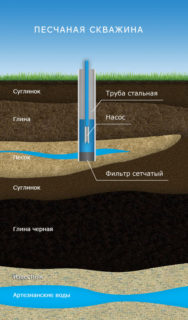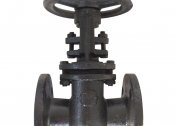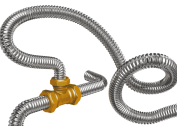Aquifer classification
Groundwater is located at different levels. Some are suitable only for technical needs. Others can be used as drinking water. The deeper the layer, the cleaner the water.
Water horizons can be divided into pressure and non-pressure.
High end
 These are the non-pressure underground waters closest to the surface, located at a depth of 1 to 5 meters. They do not have a continuous distribution. They are seasonal in nature, formed during the period of active melting of snow or in the rainy season. The rest of the time, they quickly evaporate or seep into deeper layers of groundwater. They are formed over local water-holdings, which are interlayers of dense rocks: clay or loam lenses. Also, the overhead water can also accumulate without water locks during periods of heavy irrigation with slow seepage.
These are the non-pressure underground waters closest to the surface, located at a depth of 1 to 5 meters. They do not have a continuous distribution. They are seasonal in nature, formed during the period of active melting of snow or in the rainy season. The rest of the time, they quickly evaporate or seep into deeper layers of groundwater. They are formed over local water-holdings, which are interlayers of dense rocks: clay or loam lenses. Also, the overhead water can also accumulate without water locks during periods of heavy irrigation with slow seepage.
In easily permeable sandy soils, a floodwater is not formed. For its formation, more dense loess soils and loams are needed. Use this water only for technical purposes. It is not suitable for drinking, as it is very dirty.
Ground water
Located on the first water-resistant layer from the surface. This is a constant water horizon, located in different places at different depths from 5 to 20 meters. Formed by precipitation and surface water infiltration.
They can be located between two water-resistant layers, or be limited to them only from below. Depending on this, they are pressure or non-pressure. Their level depends on the season: increases in spring and autumn, decreases in summer.
Ground water is readily available, can be used for household needs, as well as for drinking and cooking with additional filtration and boiling.
Interstratal waters
 They are located between two water-resistant layers of rocks and are under pressure. They can be located at a depth of 20 meters.
They are located between two water-resistant layers of rocks and are under pressure. They can be located at a depth of 20 meters.
Some layers are well cleaned of undesirable impurities by overlying strata, do not require cleaning and disinfection. Can be used for drinking and household needs without additional processing.
The artesian layer is one of the types of interstratal water, characterized by high pressure and a constant level.
Types of wells
Wells can be subdivided according to their purpose and method of execution.
Exploratory
 To determine the optimal place for drilling, use popular methods of observation, a method with frames. But there is a modern way to determine the depth of groundwater - drilling exploratory wells.
To determine the optimal place for drilling, use popular methods of observation, a method with frames. But there is a modern way to determine the depth of groundwater - drilling exploratory wells.
For exploration, a small diameter drill is used. If you look for the overhead wire, a diameter of 10 centimeters is enough to get to the groundwater - 20 cm. A larger diameter is used to search for deeper layers. A special probe is lowered into the exploratory well, which makes it possible to understand at what depth aquifers lie.
Abyssinian Filter
This is the easiest way to provide a country house and a plot of water. For its device, a plastic or metal pipe with a diameter of 2.5 - 4 cm with a sharp metal tip is used. Filters are installed at the bottom.
The pipe is clogged to a depth of 10-20 meters. An electric or manual pump is installed on top. Depending on the saturation of the aquifer, the productivity of the abyssinian can reach 3-5 cubic meters per hour.
Benefits:
- Low cost. Abyssinian wells do not require expensive materials.
- Installation work can be done independently, without involving complicated drilling equipment.
- High installation speed. Work can be completed in a few hours.
- Can be arranged anywhere on the site, as well as in the basement or garage.
- Durability. If the well is properly equipped, it will last 15 to 30 years.
But she also has disadvantages:
- The Abyssinian well can only be installed on sand. If harder rocks lie in the ground: limestone, thick layers of clay - it is impossible to equip it.
- The distance from the electric pump to the water mirror should be no more than 8 m. If the aquifer lies deeper, it is necessary to make a caisson and lower the pump lower.
Sand filter
 The sandy aquifer is deeper. Such a well is drilled at 20-35 meters. If there are no agricultural land or cesspools near the site, then most likely the water will be clean and suitable for food.
The sandy aquifer is deeper. Such a well is drilled at 20-35 meters. If there are no agricultural land or cesspools near the site, then most likely the water will be clean and suitable for food.
Drilling is carried out until the first sandy aquifer is reached. A concrete pipe with a diameter of 130-150 mm is used for the construction of the well. In the part that is immersed in the sand, a filter is installed. A submersible pump is used to lift the water.
The life of a filter well depends on several factors:
- frequency of use - the more often you pump water, the longer it serves;
- from the composition of the layer - if the soil consists of sand with large fractions and a large amount of impurity of gravel, the well will last a long time.
Pros of sand well:
- small-sized equipment is used for drilling, which is especially important in the equipped area;
- relatively low cost;
- use of an inexpensive pump;
- fast drilling process (1 - 2 days).
Minuses:
- low productivity (up to 1 cubic meter per hour);
- unstable quality;
- seasonal fluctuations in level.
Sand wells are the most common due to the optimal ratio of installation costs, quality and quantity of water.
Artesian (on limestone)
 The limestone well provides a large amount of clean drinking water. Its depth depends on the occurrence of the limestone layer, it can reach from 40 to 100 meters. In some cases, wells are made up to a depth of 200 meters.
The limestone well provides a large amount of clean drinking water. Its depth depends on the occurrence of the limestone layer, it can reach from 40 to 100 meters. In some cases, wells are made up to a depth of 200 meters.
For drilling, a powerful rotary installation is required. Increased requirements are also applied to the casing, since in the event of a malfunction, it is problematic to repair it at great depths. An ideal solution is a metal-plastic pipe. Powerful pumping stations are used to lift water.
Advantages of artesian wells:
- high quality water;
- good performance (up to 10 cubic meters per hour);
- lack of seasonal fluctuations in level and quality;
- durability (up to 50 years);
- no maintenance required.
Disadvantages:
- high cost of work;
- long drilling process (up to 7 days);
- the participation of overall equipment is required, it is better to drill a well on an undeveloped area.
The high productivity of the well allows its use in several areas.
Which well is better to equip on the site
When choosing the type of well, the owners of country houses are usually guided by the budget and the availability of the site for drilling equipment.
Also, the decision is influenced by the effect of Section 19 of the Law on Subsoil, as amended and supplemented in 2017. In accordance with the changes for the arrangement of an artesian well, it is necessary to obtain a license for the right to use subsoil. Abyssinian and filter wells do not require registration.


